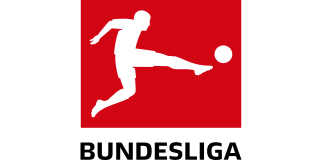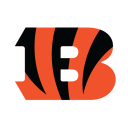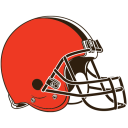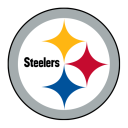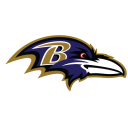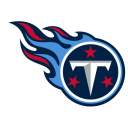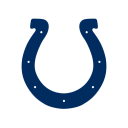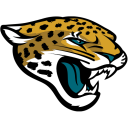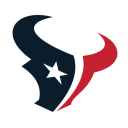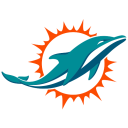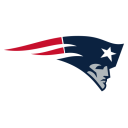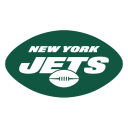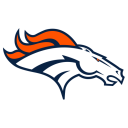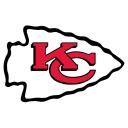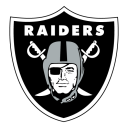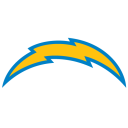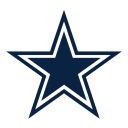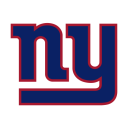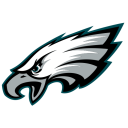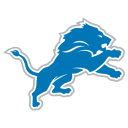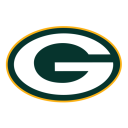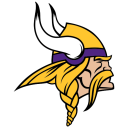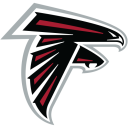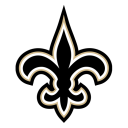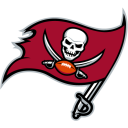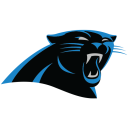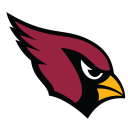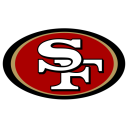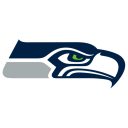What’s going wrong for the Memphis Grizzlies? Turns out, just about everything
There was a case for optimism the Memphis Grizzlies could weather the storm of Ja Morant’s season-opening 25-game suspension for gunplay vlogging. It included, but was not limited to:
Desmond Bane shouldering the highest scoring and playmaking workloads of his career and doing so without any dip in efficiency;
Jaren Jackson Jr. bouncing back from his dismal FIBA World Cup by continuing the growth he showed as a source of offense last season and remaining a Defensive Player of the Year-caliber anchor up front;
Incoming tone-setter Marcus Smart replacing both firestarter Dillon Brooks as the Grizzlies’ primary point-of-attack defender and metronome Tyus Jones as their answer to who gets everybody organized in Morant’s absence;
At least one member of Memphis’ collective of 22-and-under forwards — Ziaire Williams, David Roddy, Santi Aldama, Jake LaRavia, Kenneth Lofton Jr. — stepping into the frontcourt minutes that Brooks vacated and doing something positive with them;
Steven Adams making a full recovery from his quietly devastating late-season injury and the rest of the rotation staying healthy enough to contribute.
If that seems to you like an awful lot to ask for, when you see it all listed out like that? Well, it turns out you might be right.
After a 133-109 deconstruction Wednesday by the Utah Jazz — a game in which Memphis gave up 42 points in the first quarter, never led and trailed by 20-plus for most of the final three quarters — the Grizzlies are the NBA’s lone winless team, sitting solo in the Western Conference’s basement at 0-5.
79 points is the most points the #grizzlies have ever allowed in a first half
the 33 point deficit is tied for the largest halftime deficit in franchise history— Fastbreak Breakfast (@fastbreakbreak) November 2, 2023
It’s the first time in 21 years Memphis has opened the season with five straight defeats. Three of the losses have come at FedEx Forum, where the Grizz have boasted a .793 winning percentage over the past two seasons, with the NBA’s best home record last season. Only one of them came to a fellow 2023 playoff team; one of them came to the Wizards, who seem at this point to exist more as a source of renewable lowlight-reel energy than as a serious basketball-playing concern, yet still managed to dominate Memphis for most of the final three quarters.
Memphis ranks dead last in points scored per possession, according to Cleaning the Glass, and just 23rd in points allowed per possession, despite being able to throw the last two DPOY winners out there for 30-plus minutes every night. Bane’s doing his best in a leveled-up role against opponents’ top defensive options — 24.6 points per game while using 29.1% of Memphis’ offensive possessions, both career highs — but one of the league’s premier long-range artists is just 17-for-49 (34.7%) from the 3-point arc, and he’s managed just 16 assists against 13 turnovers in five games.
Jackson has missed more than half of his attempts inside the arc and more than two-thirds of his 3-point tries. In fact, while the Grizzlies have sought to make up for Morant’s absence in part by jacking up a ton of triples — 42.8 per game, third most in the league — they’ve only cashed in 32.2% of them, 22nd out of 30 NBA teams. Losing top marksman Luke Kennard to concussion protocol and stretch forward Aldama to an ankle sprain hasn’t helped; then again, when Kennard came back against Utah, he missed seven of his eight hoists.
Smart has finished well in the paint and ticked above 33% from deep for the first time in four years (all the way up to 34%!), but he’s got the highest turnover rate of any high-usage non-rookie in the league (hey there, Scoot and Vic). In fact, with Morant unavailable, Jones plying his trade in D.C. and veteran Derrick Rose now shelved by knee soreness, the Grizzlies are turning it over on 15.6% of their offensive possessions — a bottom-10 mark and on pace for the franchise’s worst rate since 2017-18.
Back then, an early-season absence for a beloved point guard wound up torpedoing the season. Grizzlies fans can only hope that history doesn’t repeat itself.
There’s bad news just about everywhere you look in Bluff City, where a Grizzlies team that’s spent four seasons developing into a force to be reckoned with has struggled to adapt to the loss of several fundamental elements of its identity.
Even since Morant’s emergence, the Grizzlies have ranked among the league’s worst half-court offenses, lacking enough consistent shooting to spread opponents out and decongest the paint. They’ve overcome that, though — in the regular season, at least — in part by putting relentless pressure on the rim, with Morant perennially among the NBA’s highest-volume drivers to the basket and finishing 12th in the league in total free-throw attempts in each of the last two seasons.
Through five games, though, Smart — Morant’s replacement in the starting five, but an almost diametrically opposed player stylistically — has driven about half as often as Ja did last season, passed out of his drives nearly twice as often as Ja did, and drawn personal fouls on just 2.1% of his forays into the paint, compared to 11.8% for Ja. Without that consistent source of north-south dribble penetration, Memphis’ ability to generate up-close looks has tailed off; only 27.5% of the Grizzlies’ shots have come within 4 feet of the basket, which is the fifth-lowest share in the NBA and would be the lowest mark of any Grizzlies team in the last 20 seasons.
Morant’s slices to the cup and high-volume shots on goal also created offensive rebounding opportunities. Those became a critical aspect of the Grizzlies’ approach to producing points; over the past three seasons, they ranked third, first and fifth in offensive rebounding rate, and first, first and sixth in second-chance points per game. But with road-grader Adams out for the season following knee surgery and elite backup Brandon Clarke still rehabilitating after rupturing his left Achilles tendon in March, head coach Taylor Jenkins has had to rely more on lineups featuring elevated backup Xavier Tillman Sr. (shooting just 37% from the field) or on Jackson at center — the kind you might remember being wholly unable to keep Team USA’s opponents off the offensive glass in FIBA play — with undersized options like Roddy, LaRavia, Williams and John Konchar at the 4. As a result, Memphis sits 23rd in offensive rebounding rate and 11th in second-chance points — another vital pathway to points closed off.
When all else has failed for the Grizzlies on the offensive end over the past couple of seasons, at least they could run like hell. Bad half-court execution doesn’t matter nearly as much when you’re grinding opponents down on defense, grabbing the ball off the rim, pushing the pace and either dunking, hitting a shooter in the corner or dishing off to a trailer sprinting into the fold. But the Grizzlies’ massive struggles to get stops in the early going — nobody gives up 3-pointers more often than Memphis, which ranks a rancid 28th in half-court defense — have also put a governor on their speed game. After finishing in the top three in transition frequency in each of the last four seasons, they’re running on just 16.4% of their offensive possessions thus far, 12th in the league, and have dipped to 19th in points scored per transition play.
#Grizzlies opponents have now made 89 threes this season.
That is the most opponent 3s an NBA team has allowed over its first five games of a single season in league history.— Shawn Coleman (@StatsSAC) November 2, 2023
So: The Grizzlies can’t shoot, can’t control the offensive glass, can’t get stops at the point of attack, can’t keep opponents from firing from deep, can’t consistently set one another up without turning it over and can’t get some of the below-the-fold depth pieces they desperately need healthy and on track. Outside of that, though, everything’s going great.
We come full circle, then, to a new case for optimism:
That, as The Ringer’s Zach Kram noted earlier this week, an early-season losing streak doesn’t necessarily augur a trip to the lottery for a team projected to be as strong as Memphis before the season;
That opponents won’t keep shooting like a bunch of Stephen Currys against the Grizzlies, outperforming their expected effective field-goal percentage by 5.2%, one of the largest gaps in the league thus far;
That Kennard, a career 43.4% 3-point shooter, will not continue to shoot 7.7% from deep, and that a bounce-back would provide the kind of additional perimeter punch that this team needs like a suffocating man needs oxygen right about now;
That the newly arrived Bismack Biyombo can give Memphis a second rotation-level center capable of setting stiff screens, diving for alley-oop dunks, offering some rim protection and, most importantly, allowing Jenkins to give more minutes at power forward to JJJ and fewer to all those undersized small-ball fours;
That Aldama, quietly a pretty important part of the Grizzlies’ frontcourt rotation last season, adds further depth at the position and a credible shooting threat either next to or in place of Jackson when necessary;
That Clarke can make it back before the playoff — play-in? — push, hopefully allowing Memphis to rediscover some aspects of the havoc-wreaking identity it has lost;
And, obviously and most importantly, that Morant’s return — slated to come just before a Christmas-bracketing road trip — can set things right, with the reinsertion of a true-blue superstar bumping everybody else back into their proper prescribed roles and going a long way toward curing so many of these early-season ailments.
Maybe that all comes to pass; maybe, in three months, the Grizzlies are sitting there, laughing about that late-October static, as they push toward the top of the Western standings. It’s just that … well, doesn’t that seem to you like an awful lot to ask for, when you see it all listed out like that?

 Yahoo Sport
Yahoo Sport 




